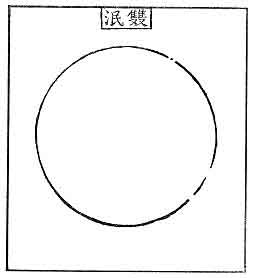File to download
Kansas

This gallery of black and white images of Kansas during the “Dust Bowl” of the 1930s seems to capture the experience of depression expressed as a landscape; as does the description of Kansas as it appears to Dorothy at the beginning of The Wizard of Oz. Is this what the world sometimes seems like to you?
Andrew Wyeth’s painting Christina’s World also seems to convey the experience of depression. Meditate on it at the Museum of Modern Art site here:
https://www.moma.org/collection/works/78455
Nominally, Wyeth’s painting conveys the experience of a physically disabled woman he knows. We suspect he is instead illustrating his own depression.

Canadian artist William Kurelek, who struggled with depression, made the lithograph “The Hound of Heaven” to illustrate a famous poem by Francis Thompson, also about depression.
What does it suggest to you, about the experience of depression, and about its possible cure?
A similar image from Kurelek is “Lord, That I May See.” Link here. Do you agree that it is more hopeful? If so, why?
Kurelek’s painting “The Maze” is also intended as a depiction of his own depression. It was painted while he was undergoing treatment in mental hospital. Notice especially the image of the small boy in a barren landscape at the top left; it is similar to Dorothy’s Kansas.
Kurelek’s own detailed explanation of the painting is at Wikipedia.
This more classical treatment of Elijah in the desert again seems to represent depression as a wasteland.

Water Therapy
Munch
Edvard Munch depicted his own experience of chronic anxiety and panic attacks in his famous painting “The Scream.” Does it seem to convey something you have felt?


Also by Munch: Melancholia. 

The Snow Queen
Various artists give their impression of the distorting mirror of depression as described in Andersen’s “The Snow Queen.”
Andersen actually says the creator of the mirror is the Devil himself. Nevertheless, illustrators have tended to soft-pedal this, as in the depictions above. Perhaps a demonstration of how resistant we are all to recognizing the reality of evil.
Try looking at yourself in the Demon’s Mirror.
Merlin’s Madness
The Hanged Man

Examples of the Hanged Man from different Tarot decks. Note that the legs are always making a sign of the cross. The “Satanic Tarot” (centre below) sees the implication of an upside down cross, and takes it as a blasphemous image.



https://creativecommons.org/licenses/by-sa/2.0/
Lord of the Animals
St. Jerome:
Merlin’s ability to herd reindeer in the story of his madness suggests someone who has tamed his animal passions. Another traditional example of this symbolism is the iconography of St. Jerome. Jerome was famous for his bad temper, which he apparently struggled with. It is often shown in images of the saint as a tamed lion.
Similar images of a “Lord of the Beasts” abound, and can be traced back to some of the earliest images excavated from the first civilizations. This taming of the animal passions, the animal urges, is, after all, the essence of civilization itself.


St. Francis of Assisi is also often shown as a “Lord of the Beasts.” Other examples abound, and in other religions as well: the Baal Shem Tov, Daniel in the Lions’ Den, San Shin in Korean folk religion, and so forth.

The Taoist saint Zhang Daoling. 
How well do you tend to get along with animals?
The Ox-Herding Pictures
This traditional series of Zen illustrations show the process of gaining control over your animal desires, the source of dukkha or ill-being.
Some below are suitable for colouring. Any might be an embroidery pattern.
Examining them is a traditional meditation. What can you see?



































